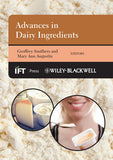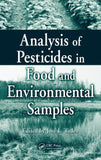Bread Making Improving Quality Second edition edited by Stanley P. Cauvain
Improving Quality
Second edition
edited by Stanley P. Cauvain
This new Second edition of Bread Making: Improving Quality is an essential handbook for the bakery technologist and for other professionals in the bread making industry.
Part 1 addresses the impacts of wheat and flour quality on bread, covering topics such as wheat chemistry, wheat starch structure, grain quality assessment, milling and wheat breeding.
Part 2 covers dough development and bread ingredients, with chapters on dough aeration and rheology, the use of redox agents and enzymes in breadmaking and water control, among other topics.
Part 3 focuses on bread sensory quality, shelf life and safety. Topics covered include bread aroma, staling and contamination.
Part 4 covers bread products such as high fibre breads, those made from partially baked and frozen dough and those made from non-wheat flours.
Contents
1. Introduction to breadmaking
2. Breadmaking: an overview
- Bread dough development
- Breadmaking processes
- What determines bread quality?
- Dough mixing and processing
- Cell creation during mixing
- Dough processing
- Gas bubble control during dough processing
- Proving and baking
Part 1: Wheat and Flour Quality
3. The chemistry and biochemistry of wheat
- The structure and composition of the wheat kernel
- Wheat carbohydrates
- Wheat proteins
- Wheat lipids
- Wheat enzymes and their roles
- Pigments and their structures
- Recent developments in wheat utilization
4. Techniques for analyzing wheat proteins
- Separation methods
- Analysing molecular properties
- Rheological measurements
- Infrared spectroscopy
- NMR spectroscopy
- Electron spin resonance spectroscopy
5. Wheat proteins and bread quality
- Cereal proteins and breadmaking quality
- Prolamin structure and bread quality
- Soluble proteins, xylanase inhibitors and bread quality
- Detergent-solubilised proteins and bread quality
- Genomics and the wheat grain proteome
6. Wheat starch structure and bread quality
- Starch properties and baking performance
- Physico-chemical properties of starch in relation to the baking process
- Starch structure and chemical composition
7. Assessing grain quality
- The importance of quality assessment at harvest
- The grain chain
- Analysis during breeding to achieve quality targets
- Analysis on-farm to achieve quality targets
- Sampling aims and methods
- Analysis at grain receival to achieve quality targets
- Analysis during storage and transport to achieve quality targets
- Analysis in buying and blending to achieve flour-quality targets
8. Milling and flour quality
- Flour milling
- Recent developments in flour milling
- Flour milling and flour quality
- Milling research
9. Wheat breeding and quality evaluation in the US
- Wheat classification
- Selection of wheat varieties with desired characteristics
10. Improving wheat protein quality for breadmaking: The role of biotechnology
- Wheat gluten proteins and dough strength
- HMW subunits and bread quality
- The genetic transformation of wheat
- Manipulating HMW subunit composition and dough properties
- Prospects for using GM to improve wheat processing quality
11. Novel approaches to modify wheat flour processing characteristics and health attributes: from genetics to food technology
- Exploiting natural variation in gluten proteins to modify wheat quality
- Genetic modification of wheat
- Use of non-wheat flours to modify bread quality attributes
- Modifications to reduce wheat allergy and intolerance
Part 2: Dough Development and Particular Bread Ingredients
12. Bread aeration and dough rheology: an introduction
- History of bread aeration studies
- History of dough rheology studies
- Methods for studying bread aeration and dough rheology
- Breadmaking – a series of aeration/rheology interactions
- The future of bread aeration and rheology research
13. The molecular basis of bread dough rheology
- Factors affecting dough rheology
- Polymer networks in doughs
- The molecular mechanism of energy storage in dough
- How much dough rheology can we explain?
14. The role of water in dough formation and bread quality
- Dough as a disperse system
- Water displacements and time dependent properties of the dough
15. Foam formation in dough and bread quality
- Principles of foam formation and stability
- Surface active dough components
- The role of the aqueous phase of dough
- Analytical techniques
16. Controlling bread dough development
- Dough rheology during mixing
- Dough development
- Oxidising and reducing agents
- The effects of mixer type
- Radical bread process
- Controlling dough development
- Emerging methods for controlling dough development
17. Molecular mobility in dough and bread quality
- Molecular mobility in dough
- Dough properties in baking
- Controlling molecular mobility to improve bread quality
18. The use of redox agents in breadmaking
- The redox state in flour
- Redox reactions during processing
- Redox agents: oxidants and reductants
19. Applications of enzymes in breadmaking
- The nature of enzymes
- Commercial production of enzymes
- Genetically modified organism (GMO)
- Applications in breadmaking
- Baking examples
20. Water control in breadmaking
- Water composition and properties
- Dough formation
- Proving and baking
- Water activity after baking
Part 3: Bread Sensory Quality, Shelf Life and Safety
21. Bread aroma
- Formation of volatile compounds during breadmaking
- Extraction and analysis of bread volatile compounds
- Volatile composition of bread
- How can bread aroma be improved?
22. Applications of texture analysis to dough and bread
- Principles and types of instrumental analysis as applied to dough
- Principles and types of instrumental analysis as applied to bread
23. Bread staling
- Bread crumb structure
- Bread stability
- Anti-staling agents
24. Mould prevention in bread
- Current techniques for mould control and their limitations
- Development of new methods for mould control
25. Mycotoxin contamination of wheat, flour and bread
- Some additional persistent problems of mycotoxins in the food chain
- Parent mycotoxins in cereals occurring in bread and bakery products
- Legislation
- Development in analysis techniques
- Development of non-invasive and rapid (screening) techniques
Part 4: Particular bread Products
26. Improving the quality of bread made from partially baked, refrigerated and frozen dough
- Frozen part baked technology
- Non-fermented frozen dough technology
- Pre-fermented frozen dough technology
- Energy demand for the bake off technologies
27. Nutritionally enhanced wheat flours and breads
- Nutritional value of wheat
- Effect of processing on the nutritrional value of wheat
- Different approaches to increase the nutritional value of wheat flour
- Nutritional improvement of wheat flours during breadmaking performance
- Ingredients for enriching wheat baked goods
28. Formulating breads for specific dietary requirements
- Wheat allergy and coeliac disease
- Glycemic index and glycemic load
- Bread high in dietary fibre
29. Improving the quality of high-fibre breads
- Sources of fibre
- Challenges in high-fibre baking
- Improving the quality of fibre enriched foods
30. Quality of breads made with non-wheat flours
- Non-wheat pan breads
- Traditional non-wheat bread products
- Quality issues
Index


















